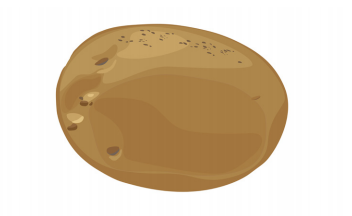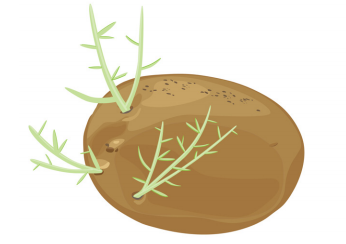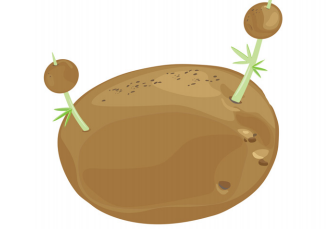#SeedPotatoAge #CropPerformance #PotatoCultivation #SeedSelection #PhysiologicalAging
The age of seed potatoes plays a crucial role in determining the success of a crop. Seed tubers have two important ages: chronological age and physiological age. Understanding and managing these ages is essential for optimizing crop performance. In this article, we delve into the concept of seed potato age, its measurement, and its implications for potato cultivation.
Chronological Age
Chronological age refers to the number of days, weeks, or months since tuber initiation or harvest, without considering environmental conditions. Calculating chronological age from tuber initiation is more accurate, as it corresponds to a specific stage in the tuber’s development. However, pinpointing the exact date of tuber initiation can be challenging. Alternatively, measuring chronological age from the harvest date is simpler but less precise.
Physiological Age
Physiological age, on the other hand, refers to the internal age of the seed potato, influenced by biochemical changes within the tuber. It can be defined as the state of the seed tuber that affects its production capacity. Physiological age is influenced by both chronological age and the environmental conditions experienced during growth and storage. As the chronological age increases, so does the physiological age.
It’s worth noting that seed lots with the same chronological age can have different physiological ages. Similarly, seed lots with the same physiological age can have varying chronological ages. Factors such as variety, temperature, drought, cutting (e.g., for seed potato pieces), and diseases can significantly impact physiological aging.
Development and Consequences
The physiological age of seed potatoes has a profound impact on crop performance. Different seed crops harvested on the same date can exhibit diverse physiological ages. Some seed tubers may readily sprout, while others remain dormant. This discrepancy in physiological age can have consequences for the crop’s growth, development, and yield.
Understanding the physiological age of seed potatoes empowers farmers to make informed decisions when selecting seed for their specific market needs and growing conditions. By choosing seed with an appropriate physiological age, farmers can optimize crop performance, maximize yields, and reduce potential losses.
[table id=5 /]
Conclusion
The age of seed potatoes, encompassing both chronological and physiological age, significantly influences crop performance. Farmers must consider these ages and their interactions with environmental conditions when selecting seed for planting. By understanding the concept of seed potato age and its implications, farmers can make informed decisions, leading to improved crop productivity and profitability.

Dormant
- Potatoes do not sprout at all.
- Dormancy period varies depending on cultivar.
- Chemical and non-chemical means of breaking dormancy.
- Minimal sprouts.

Young
- Young seed is characterised by apical dominance.
- Sprouts come off apical end of tuber.
- Fewer stems per tuber.
- Fewer tubers but large in size.
- Multiple sprouts.

Middle
- Loss of apical dominance.
- Multiple stems (typically 3-6) per plant.
- Aged.
- High number of tubers per plant, but reduced size.
- Middle aged seed that has been de-sprouted should be considered old seed.
- Excessive branching of sprouts.

Old
- Sprouts weak and do not produce vigorous plant.
- Proliferation of tubers but plants lack vigour to bulk tubers

Little Tuber Disorder
- Small tubers form on the sprouts giving rise to the little tuber disorder.
- This seed age should not be used.
Source: Australian Potato Growers

